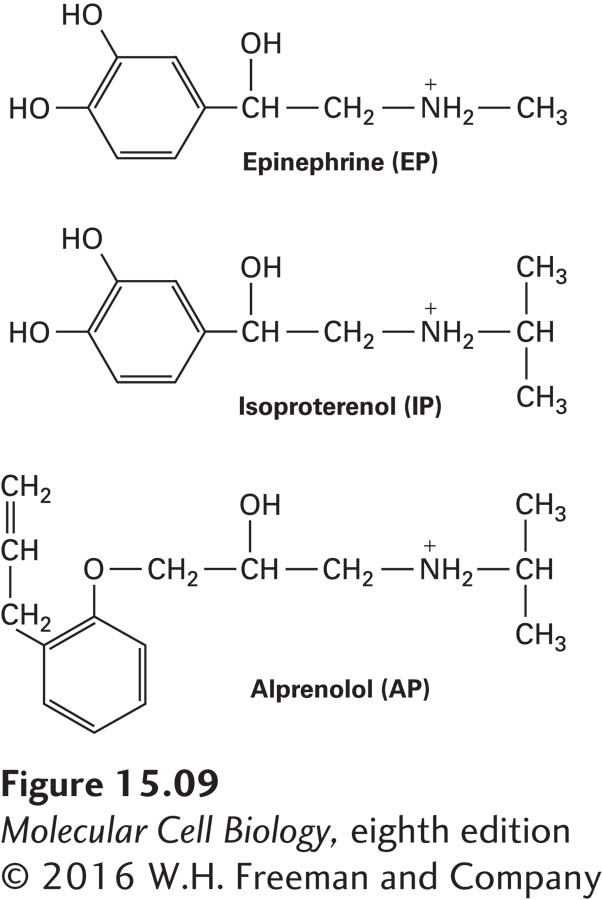Consider, for instance, the drug isoproterenol, used to treat asthma. Isoproterenol is made by the chemical addition of two methyl groups to epinephrine (Figure 15-9). Isoproterenol, an agonist of β2 epinephrine-responsive G protein–coupled receptors on bronchial smooth muscle cells, binds about tenfold more strongly (has a tenfold lower Kd) than does epinephrine. Because activation of these receptors promotes relaxation of bronchial smooth muscle and thus opening of the air passages in the lungs, isoproterenol and other agonists are used in treating bronchial asthma, chronic bronchitis, and emphysema. In contrast, activation of a different type of epinephrine-responsive G protein–coupled receptor on cardiac muscle cells (called the β1-adrenergic receptor) increases the heart contraction rate. Antagonists of this receptor, such as alprenolol (see Figure 15-9) and related compounds, are referred to as beta-blockers; such antagonists are used to slow heart contractions in the treatment of cardiac arrhythmias and angina.

FIGURE 15-9 Structures of the natural hormone epinephrine, the synthetic agonist isoproterenol, and the synthetic antagonist alprenolol. As discussed in the text, isoproterenol and alprenolol, both of which bind to receptors for epinephrine, are used as drugs to treat different conditions.
